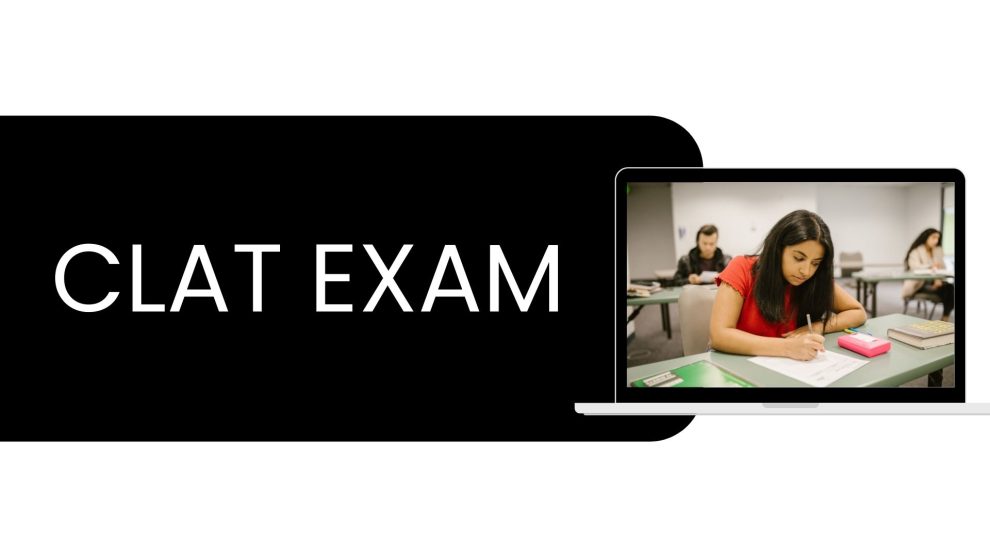CLAT 2022 is a common test for UG and PG course admissions in the prestigious NLUs. The Consortium of NLUs administers it. It is organised on a national level. It intends to assess candidates’ knowledge of English, Legal Reasoning, Logical Reasoning, General Knowledge and Quantitative Techniques. The candidate’s aptitude for legal studies is tested through all the test sections. The primary focus is not on assessing the candidates’ prior knowledge, though there might be some questions here and there in the current affair section that would demand to recall pre-learnt facts and knowledge.
To familiarise candidates with the CLAT Exam Pattern, the Consortium of NLUs has given a clear idea of the sections, questions and how challenging the exam would be. The intention here is to give all the details that candidates can use to understand the exam and further plan their CLAT 2022 paper preparations. This year, CLAT will be held twice. CLAT 2022 will be held on 19 June 2022, and CLAT 2023 will be held on 18 December 2022. The registrations for CLAT 2022 commenced on 1 January 2022.
CLAT 2022 Syllabus
CLAT 2022 exam is divided into 5 different sections. All these sections collectively intend to check candidates’ aptitude for legal studies. Therefore, the CLAT Syllabus is also laid out according to the topics included in a section.
- English Language:
This section will include passages of 450 words. The passages will be excerpts from contemporary and historically significant fiction and non-fiction writings. The standard of the passage will be such that a 12th grader can read it in about 5-7 minutes.
Each passage will have its own set of questions that will demand the employment of abilities like;
- Comprehension of multiple viewpoints present in the passage.
- Drawing inferences and conclusions.
- Comparing and contrasting the various narratives and arguments laid out in the passage.
- To be able to make meaning of the words and phrases of the passage.
-
Current Affairs including General Knowledge:
This section includes passages of up to 450 words each. These would include news, journalistic sources and other non-fiction writing. The questions included in the passage intend to test candidates on their legal knowledge. Nothing beyond the passage is expected out of the candidate.
The different aspects of general knowledge and current affairs tested through the passage are
- Contemporary events of significance from India and the world;
- Arts and Culture;
- International affairs; and
- Historical events of continuing significance.
-
Legal Reasoning
This section will also include passages of 450 words each. The passages in this section will talk about legal matters, public policy or moral philosophical enquiries. General knowledge about current legal and moral issues will help the candidate apply general principles or propositions to the given instances. This passage will require the candidate to:
- Identify and infer the rules and principles laid out in the passage;
- Application of rules and principles to similar and varied scenarios; and
- To infer how alteration in rules or principles may change how they are applied in different scenarios.
-
Logical Reasoning
This section will have passages of 300 words each. These passages will have questions based on the following skills that the candidates need –
- Comprehend the argument, its premises and conclusions.
- Read and identify the arguments set out in the passages.
- Critically analyse patterns of reasoning and assess how conclusions may depend on particular premises or evidence.
- Infer what follows from the passage and apply these inferences to new situations.
- Draw relationships and analogies, identify contradictions and equivalence and assess the effectiveness of arguments.
-
Quantitative Techniques
It will include short sets of facts and propositions, graphs or textual, pictorial or diagrammatic representations of numerical information, followed by questions. The information is to be interpreted, and further mathematical operations are applied to the provided information. The questions demand –
- Deriving, inference and manipulation of numerical information given in the paragraphs or the form of other representations; and
- Application of different 10th standard mathematical operations like ratios and proportions, basic algebra, mensuration and statistical estimation.
CLAT 2022 Exam Pattern
- The exam will be conducted in Pen-Paper mode.
- The total number of questions will be 150.
- The maximum marks that the CLAT candidates can obtain are 150.
- 1 mark will be awarded for each correct answer, and 0.25 mark will be deducted for each wrong answer. So, the exam has negative markings.
- The duration of the exam is 2 hours.
CLAT 2022 Section Wise Distribution and Weightage
| S.No. | Subjects | Questions
(approx.) |
CLAT total marks | Weightage |
| 1 | English including Comprehension | 28-32 | 28-32 | 20% |
| 2 | General Knowledge and Current Affairs | 35-39 | 32-35 | 25% |
| 3 | Legal Reasoning | 35-39 | 35-39 | 25% |
| 4 | Logical Reasoning | 28-32 | 28-32 | 20% |
| 5 | Quantitative Techniques | 13-17 | 13-17 | 10% |
| TOTAL | 150 | 150 | 100% |
Other key features of CLAT 2022
- Reading skills must be focused on as every section has passages to read and comprehend.
- Reading must be done effectively and efficiently so that each question gets due time.
- Make strategies to complete the paper in time and achieve 100% accuracy.
Thus, CLAT Exam needs a lot of practice and strategic studying. Candidates must focus on efficiency and accuracy. For further details about the CLAT paper pattern, visit CLAT’s official site.












Add Comment